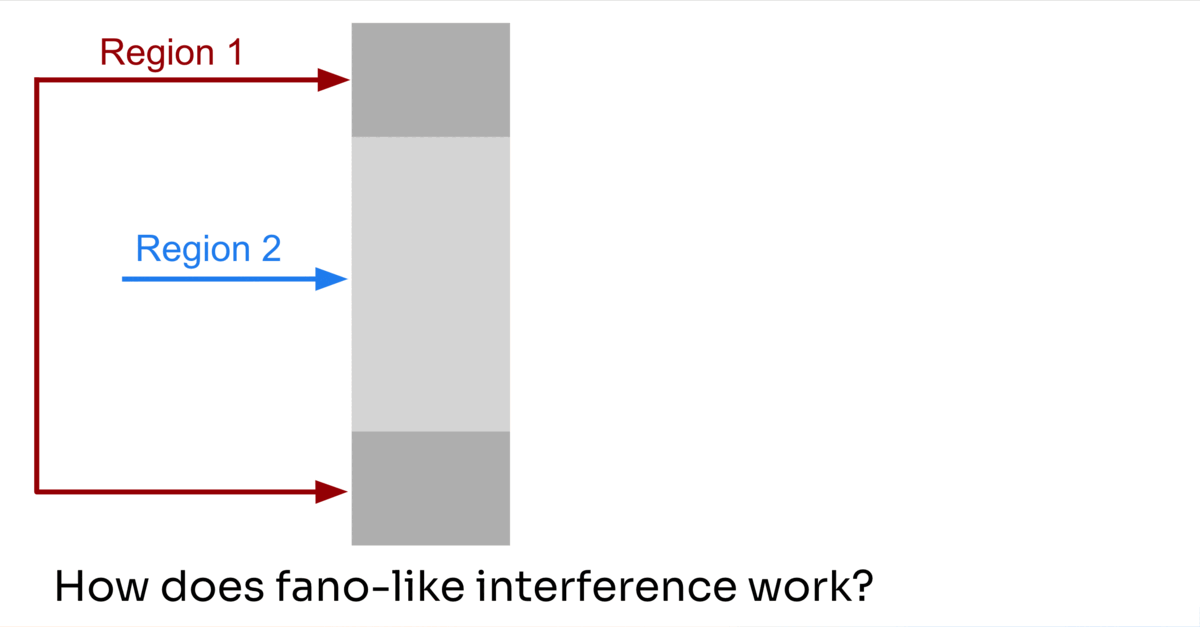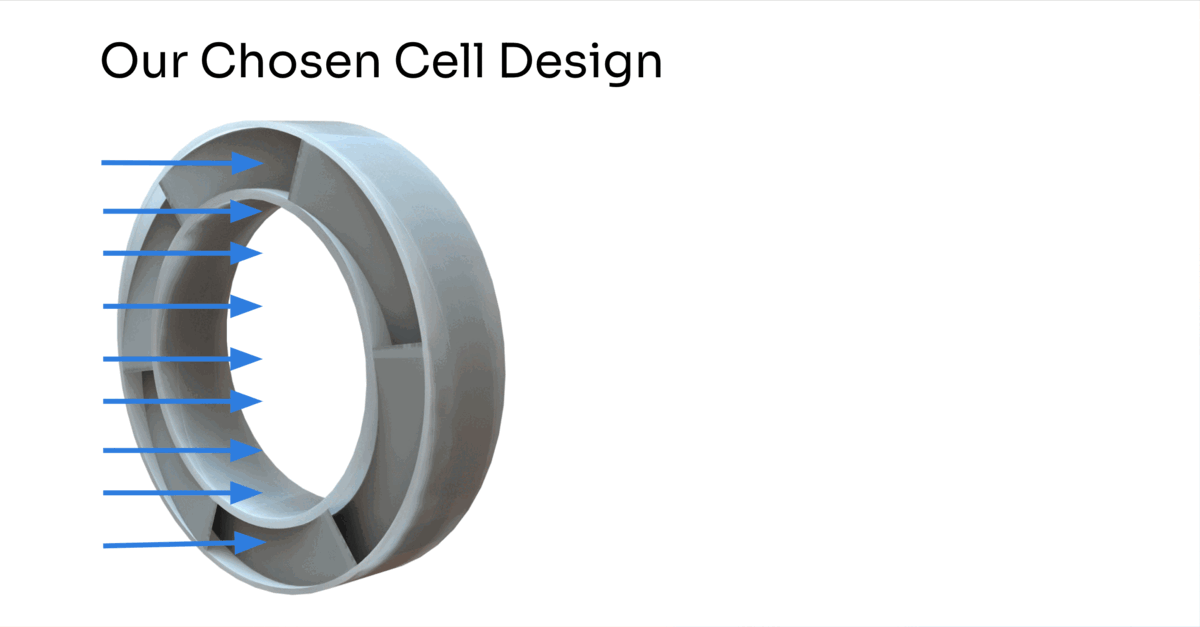
HOW DOES CALYPSO WORK?
Calypso is a metamaterial cell based on a design out of a Boston University study [1]. It works thanks to a concept known as fano-like interference, which is explained by the text and accompanying GIF below.

The idea of fano-like interference is dependent on something called a transverse bilayer. It is called this because when you look at the cell from a transverse view, it can be separated into two different regions, Region 1 and Region 2 as shown in the GIF.
These two regions are designed so that they have different acoustic properties, which is the key to the design.
When incident sound of a specific frequency approaches our cell (it is, as you would assume, all in phase), some of this sound passes through the Region 1, and some in Region 2.
In Region 1, there is a higher acoustic impedance, so the sound effectively travels slower and it begins to go out of phase with the faster sound traveling through Region 2 .
By the time the sound waves have passed through the cell regions, they are now fully out of phase. As a result, they now interfere with each other. This destructive interference leads to lower amplitude sound, and hopefully a much quieter siren.

This looks very similar for our cell. Our cell has donut shape, with Region 1 being the ring itself, designed with a set of channels running through it, and Region 2 being the hole in the centre.
If we look at a cut section of the cell, we can see how the sound travels through the helical channels and is effectively slowed down by having to travel a longer distance.
These two paths have different acoustic properties that cause destructive interference, and lower the amplitude of the output sound, as we saw in the earlier example.
HOW DID WE GET HERE?
The first step to getting this to work was to specify the frequency we wanted to target with our design. Using Sonogram [2], we ran a Fast Fourier Transform (FFT) analysis on a HiLo siren recording and determined the peak frequencies to be at 818 Hz and 990 Hz.

Once we had done this, we took the cell design from the BU study [1] and created a new design that essentially transformed the previous one by being able to target two frequencies instead of only one by using different channel dimensions for each frequency.

Then, using that design, we analysed the effectiveness of our design using a finite element analysis software called COMSOL [3], using the acoustics module and testing for the change of the pressure level of a sound travelling through our cell at different frequencies.

Once we confirmed that our design was working in simulation as intended, by targeting our desired frequencies, we transitioned to real-world testing using a test rig we built based on the ASTM standard test method for normal incidence acoustical properties of a porous material [4].


This includes our metamaterial cell at the center of the waveguide, with microphones on either side of it. The source of the sound comes from a speaker that is placed inside a noise isolating box.
Our final metamaterial design targets the two main frequencies in ambulance sirens achieving a +10dB decrease in loudness (equivalent to a +50% decrease in perceived noise). The graph below shows our test results.

Our graph shows that we were able to achieve a 10dB decrease (marked by the dotted line) at our target frequencies (marked by the big orange dots). Although the peaks were slightly off from our target frequencies, we were still successful in achieving our desired results.
Further fine tuning the design of the cell could give us +15dB at our target frequencies and would bring us a step closer to solving the problem of loud noises in apartments of New York City.
Please download our Final Analysis Report by pressing the icon below.
[1] - Ghaffarivardavagh, et al. Ultra-open acoustic metamaterial silencer based on Fano-like interference. American Physical Society, Jan 2019.
[2] - Lauer, et al. Sonogram Visible Speech 5.0. https://github.com/Christoph-Lauer/Sonogram
[3] - COMSOL Inc. COMSOL Multiphysics® Software. https://www.comsol.com/
[4] - Standard Test Method for Normal Incidence Determination of Porous Material Acoustical Properties
ASTM E2611−19 - American Society for Testing & Materials